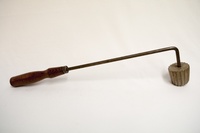-

-
-

"This is a traditional wedding dress from Northern India, this example is not an antique"
-

Thanjavur painting is a classical South Indian painting style, which was inaugurated from the town of Thanjavur (anglicized as Tanjore) and spread across the adjoining and geographically contiguous Tamil country. The art form draws its immediate resources and inspiration from way back about 1600 AD, a period when the Nayakas of Thanjavur under the suzerainty of
the Vijayanagara Rayas encouraged art-chiefly, classical dance and music as well as literature, both in Telugu and Tamil and painting of chiefly
Hindu religious subjects in temples. It is distinguished by its famous gold coating. However, it can safely be surmised that Thanjavur painting, as we know it now, originated in the Maratha court of Thanjavur (1676 -1855).(1) It has been recognized as a geographical indication by the government of India in 2007-08.
Thanjavur paintings are characterized by rich and vivid colors, simple iconic composition, glittering gold foils overlaid on delicate but extensive gesso work and inlay of glass beads and pieces or very rarely precious and
semi-precious gems. In Thanjavur paintings one can see the influence of Deccani, Vijayanagar, Maratha and even European or Company styles of painting. Essentially serving as devotional icons, the subjects of most paintings are Hindu gods, goddesses, and saints. Episodes from Hindu Puranas, Sthala-puranas and other religious texts were visualized,
sketched or traced and painted with the main figure or figures placed in the central section of the picture (mostly within an architecturally delineated space such as a mantapa or prabhavali) surrounded by several
subsidiary figures, themes and subjects. There are also many instances when Jain, Sikh, Muslim, other religious and even secular subjects were
depicted in Thanjavur paintings. Thanjavur paintings are panel paintings done on wooden planks, and hence
referred to as palagai padam (palagai = "wooden plank"; parlance. In modern times, these paintings have become souvenirs for festive occasions in South India - colorful pieces of art to decorate walls, and
collectors, items for art lovers, as also sadly sometimes, dime-a-dozen bric-a-bracs to be purchased from street corner practitioners.
-

"This is Lehanga, traditional attire for Kathak Dance. This was used for a Jaipur Style Kathak Dance to Bollywood music. Dancers wear Gheengu on their feet, (Bells), bangles, Tika"
-

This is a traditional look for Kathak dance. We wear lehengu. Kathak belongs to India from different parts of India from ancient times. We are performing Jaipur style. Additionally we wear jewelry which looks traditional too.
-
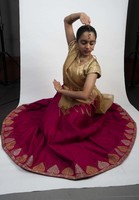
"I am dressed in a dance dress, which if from North India. Kathak is an Indian classical dance. This is an important dance in India that is performed to show the beauty of the dance and the performer. The dress I am wearing was worn in ancient India and is still being worn today to pass on tradition. I am wearing small accessories (earrings, necklace, head-piece) that enhance the beauty of the person wearing it."
-
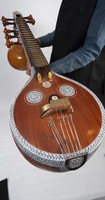
"Oldest string instrument in the world."
-
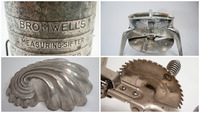
-
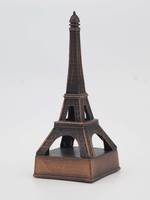
My Husband of 33 years proposed to me under the Arc de Trimophe on July 4th, 1985, after which we had a salmon dinner on the Champs-Élysées. During my Five years in Paris I could see the Eiffel Tower almost daily. My heart is in Paris!"
-

-

"This Kathak attire is a blue gown with golden shawl and wearing golden stoned ornaments. Kathak is a North Indian Classical dance with a lot of hand leg coordination needed with fast steps"
-
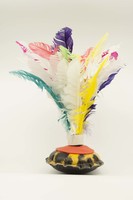
This item is a traditional object people use to play a game called Peteca. The object was originally used by Tupian indigenous tribes in celebrations and parties. Nowadays Brazilian people still have fun playing Peteca. It is important to Indigenous tribes in pre-colonial times. It is popular across the country, but the state of Minas Gerais is more known by this competition.
-
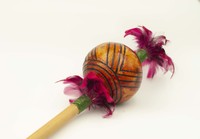
This is a very traditional indigenous instrument, specifically related to praying for rain. It is associated with the Amazon.
-
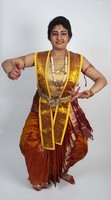
"It is about Lord Ganesha, the remover of obstacles, also called the elephant headed god. It is auspicious to start an event with a Ganesha song so it will go smoothly. Started by St. Sri Sidhendra Yogi"
-

It represents my culture and background and as well as my family's roots. The top was hand stitched by my own grandmother"
-

I spent five years living and studying in Paris. I often climbed to the top and I celebrated the completion of my doctorate at the restaurant on the top.
-
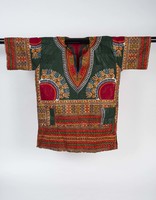
"Represents Cape Verdean Culture, used on cultural and sometimes casual occasions. Represents some aspects of African countries and Cape Verdean independence from Portugal"
-
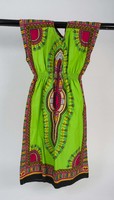
"Represents Cape Verdean Culture, used on cultural and sometimes casual occasions. Represents some aspects of African countries and Cape Verdean independence from Portugal"
-
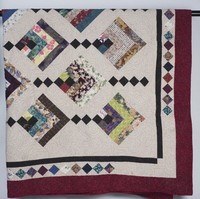
"My mother was a Home Economics major here at FSU from 1976-1980. She learned to quilt and even design her own bridesmaids dresses. This quilt was made for me by my mother for my graduation gift from FSU in 2013. I have a hope chest of quilts from my mom, but this one is my favorite. It is vibrant and almost multicultural demonstrating my love for traveling."
-

"My father gave me this guiro when I was a young girl. In Puerto Rico, the guiro is played especially in December as part of the Paranda celebration. The instrument reminds me of family, my culture and Puerto Rico."
-

"It reminds me of my native land and reminds the world of Palestine and the Palestinian question, focusing on a just solution for our homeland."
-

Worn for formal events like weddings, functions, festivals.
-
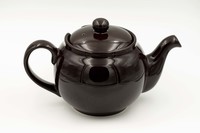
"This is a highly traditional English teapot, I'm proud to continue my grandmother's traditional tea preparation"
-
